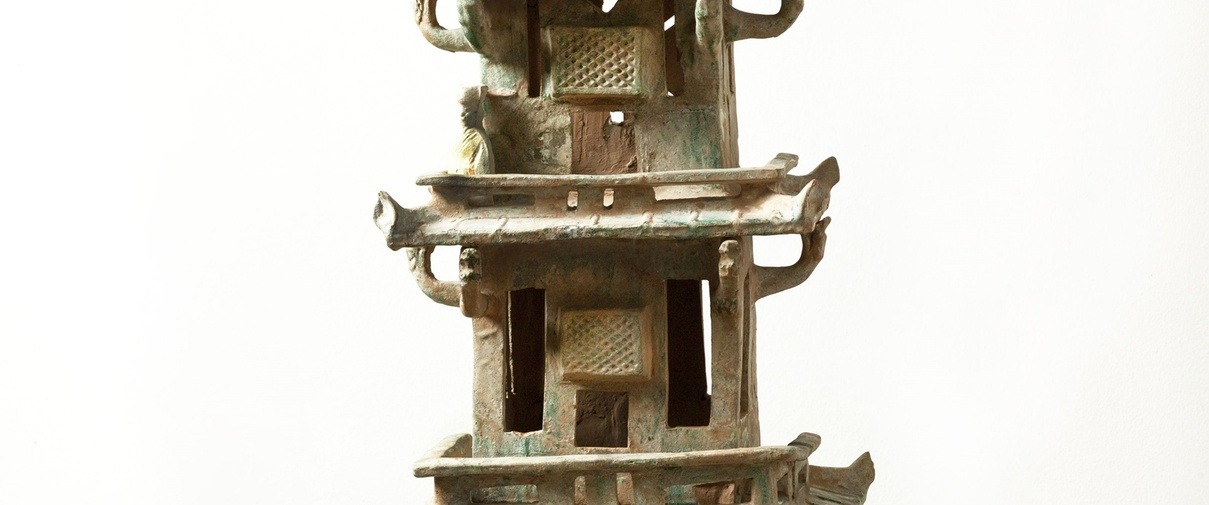Grave sculpture in the shape of a tower, China, eastern Han (25 – 220), earthenware, h. 100 cm, on loan from Ottema-Kingma Stichting.
The function of this tower is unclear, but it would not have been in an imperial tomb. Some researchers call it a watchtower. Others think it may have been a pavilion. There are still remains of green glaze on the tower, which shows that this was once a completely painted object. This colour is typical of the Han period (25 – 200). Copper was added to the lead glaze that was applied to the object. When heating, extra oxygen was then added to the kiln. This chemical process resulted in the green glaze.
On either side of the entrance to the tower are two mythical birds, with a number of men below them. These figures probably served as protection. On the tower itself are four more figures: three men and a woman with a baby in her arms. It seems that she is breastfeeding the child. The man next to her has an object in his hands, perhaps a cup to drink from. Why are they standing there? Were these figures originally part of this tower or were they added later by a collector, as is the case with dollhouses? We will probably never know the answer to this question, but all in all this tower gives us a unique view of the architecture, customs and costumes during the Han Dynasty.
Emperor
The tradition of using mingqi in tombs originated during the Qin Dynasty (221 – 206). Until then, it was customary to bury real people, such as slaves, women, and animals, with a ruler. Qin Shi Huangdi (259 – 210), the first emperor of all China, changed this: he decided to use ceramic versions instead. He ordered that dozens of trenches be made in the construction of his tomb and filled with an entire army made of terracotta. The soldiers and other figures were made life-size and worked in great detail with different hairstyles, clothing, and other physical features. After the ceramics were fired, they were painted in different colors. Bronze versions of birds and other animals were also made. It must have been an enormously impressive ensemble. The emperor died at a young age. After his death, his tomb was forgotten until a farmer found a piece of ceramic on his land in 1974 that looked like a soldier's armor. Excavations began on a large scale and the terracotta army was rediscovered. The excavations are still ongoing, and over 2,000 soldiers have been unearthed. However, the emperor's pyramid-shaped tomb has still not been opened. It is said that the world has been recreated in miniature here, with rivers of mercury and a full starry sky. Who knows, maybe this will happen one day and we will see if these stories are true.
Eline van den Berg, curator Asian ceramics at Princessehof National Museum of Ceramics.
